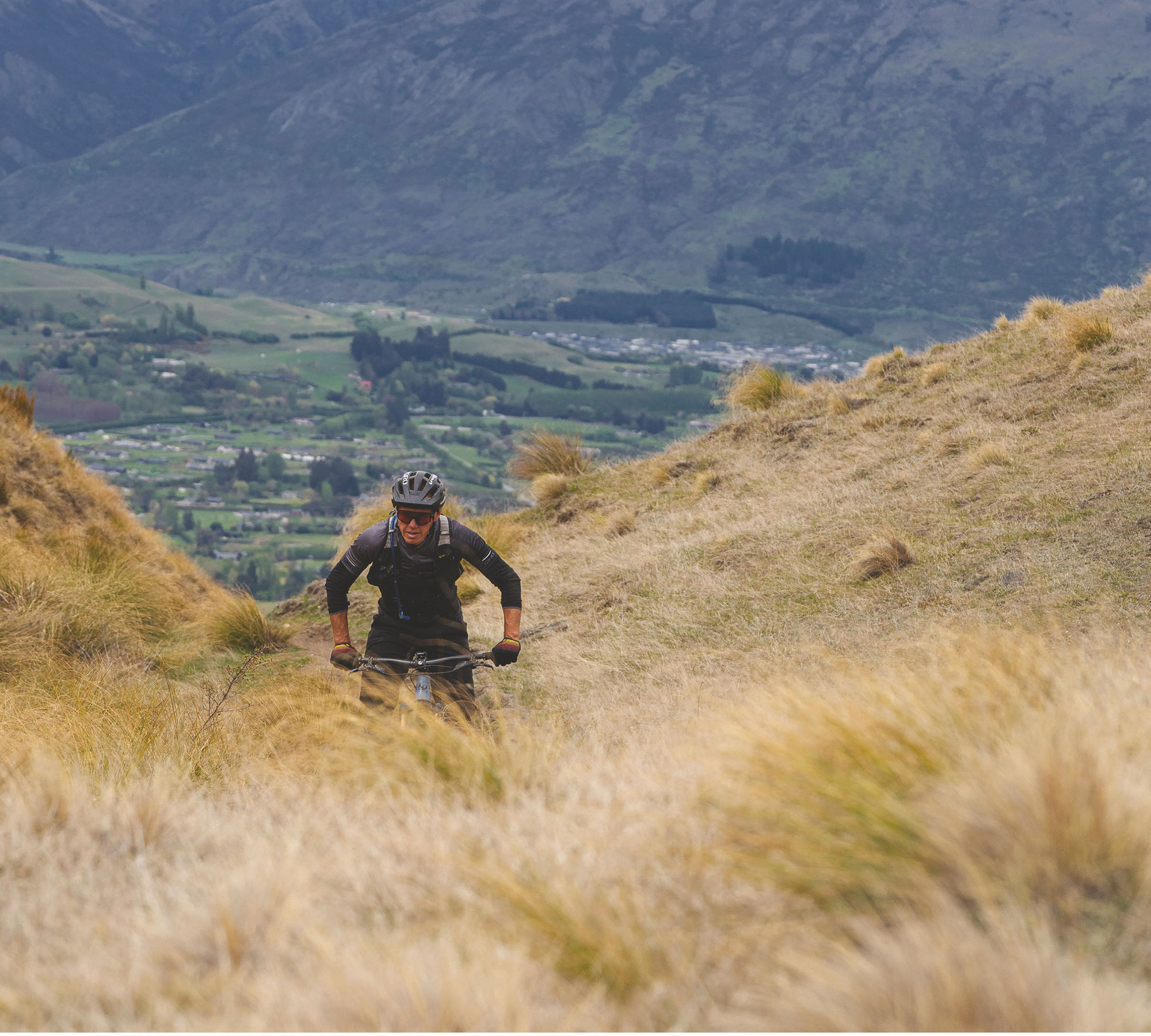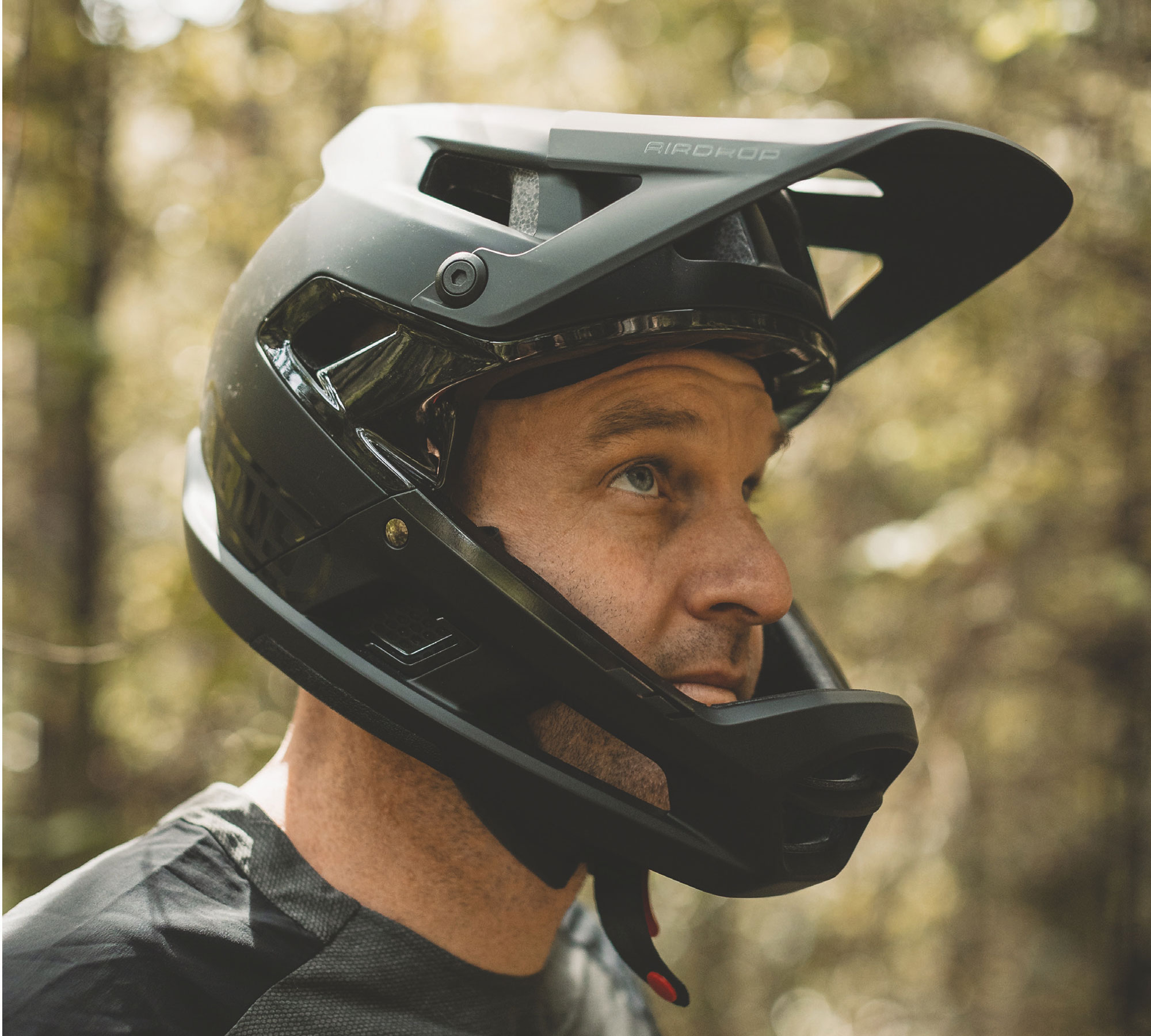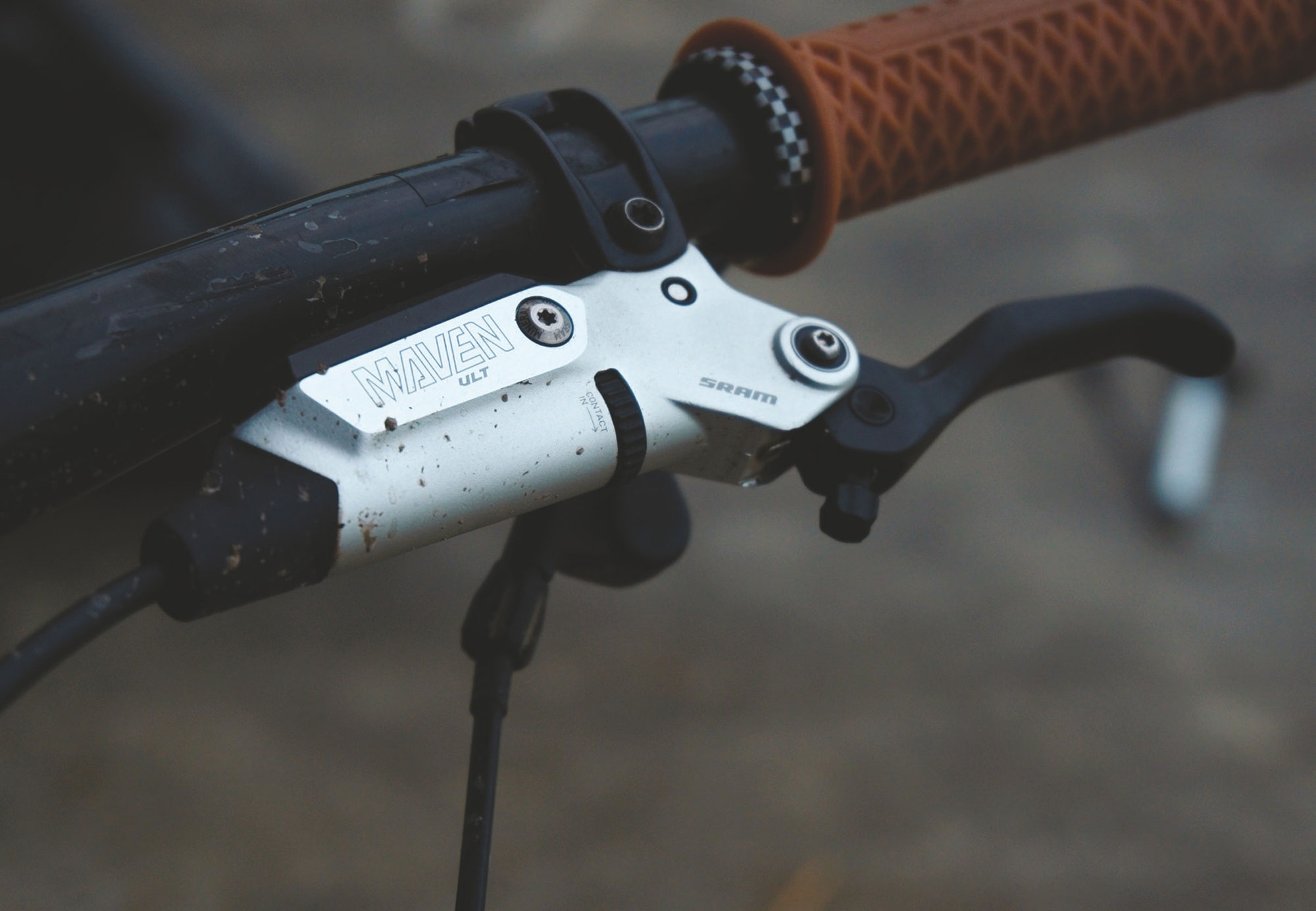SRAM all day
Words Ben Hildred
Images Callum Wood
Sun up to sun down; one final push; extend the loop; another lap; just keep going.
SRAM has created an event in Whistler to celebrate their new transmission, a way to push participants and blur the gap between type one and type two fun; T-type fun, maybe?
The original event was a great success during the Canadian Crankworx stop. Feedback and stories from its inaugural spin justified it as an event to be repeated – but why wait for summer to roll around again in B.C when Queenstown’s best season is in full swing? Let’s do an All Day ride here too!
I was tasked with the effortless mission of persuading 40 friends to enrol for a day of fun and riding bikes with a loosely formed plan. In a town of keen beans it was pretty simple, and with the promise of a beer and food provided by SRAM, at Atlas after their pedal, it was on.
Ten teams of four met at Atlas first thing to get briefed, receive an ‘All Day’ handbook and create their own adventure. Each team was given the same seven checkpoints; get to all the checkpoints, take a team photo, send it to me and return to Atlas. How you get to the check points, the trails you use and the routes you take was up to each team. Meanwhile, I’d be at Atlas ‘all day’ with a colour printer, documenting each team’s mission live, printing off the checkpoints, as well as other images the teams saw fit to send, and creating a story board for everyone to see on return. Easy as!

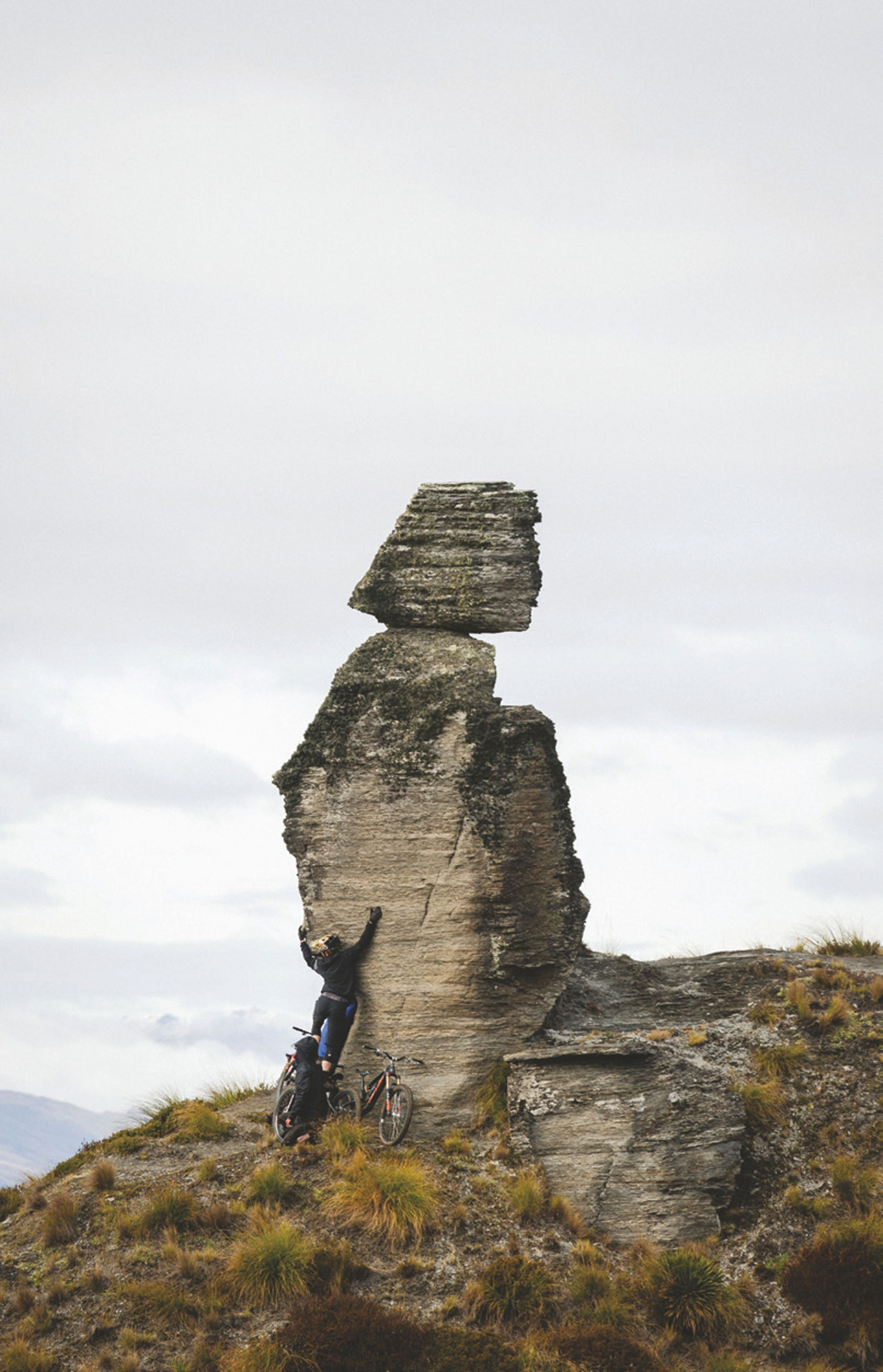
I was tasked with the effortless mission of persuading 40 friends to enrol for a day of fun and riding bikes with a loosely formed plan. In a town of keen beans it was pretty simple, and with the promise of a beer and food provided by SRAM, at Atlas after their pedal, it was on.
I spent the day on my toes, printing and pinning the snap shots of my friends’ ‘trails’ and tribulations. Recovering from a big ride the weekend before, I didn’t think I was in the mood to pedal, although seeing the laughs, predicaments, comradeship and pursuits everyone was on made me remarkably jealous, although stoked everyone was having a blast. The photos tell the stories. The teams were varied: a team of troopers headed by local force on a bike, Erin Greene, went hard on the adventure aspect, taking the most offbeat route over the mountains. Meanwhile, team Scotland, steered by Craig ‘Crug’ Munro shipped his motley crew around, surviving on their favourite fermented fizz – the one consistent every time my phone beamed updates were their smiles. The locations chosen meant teams had to visit Coronet Peak’s famous Rude Rock, grind up to the Ben Lomond saddle, dive down into Skippers Canyon, visit Wynyard’s famous jumps and sit atop McGazzas big table – all elements of an epic Queenstown adventure. Once all checkpoints were checked, teams started to return in the late afternoon, with stories to accompany the timeline of photos that awaited them, pinned up for all to see. Teams had averaged 2000 – 2600 vertical meters over 50 – 65km, mostly off-road. The question that concluded the day: when can we do that all again?! Logan Weber; “I had the best day pedalling I’ve ever had! For sure hope this happens next year!” The All Day ride was Logan’s biggest day on the pedals to date. After severely contracting the type two bug, he went on to complete an Everest a few weeks later! A huge thanks to SRAM for suggesting the event be held in Queenstown, and for funding the day; and to Atlas for hosting us all – the best bar around! What a time.
Checkpoints: McGazza Table; Ben Lomond Saddle; Beached as;Wynyard; Rude Rock; THE Rude Rock; Pack Track and Sack river crossing; Conestown.
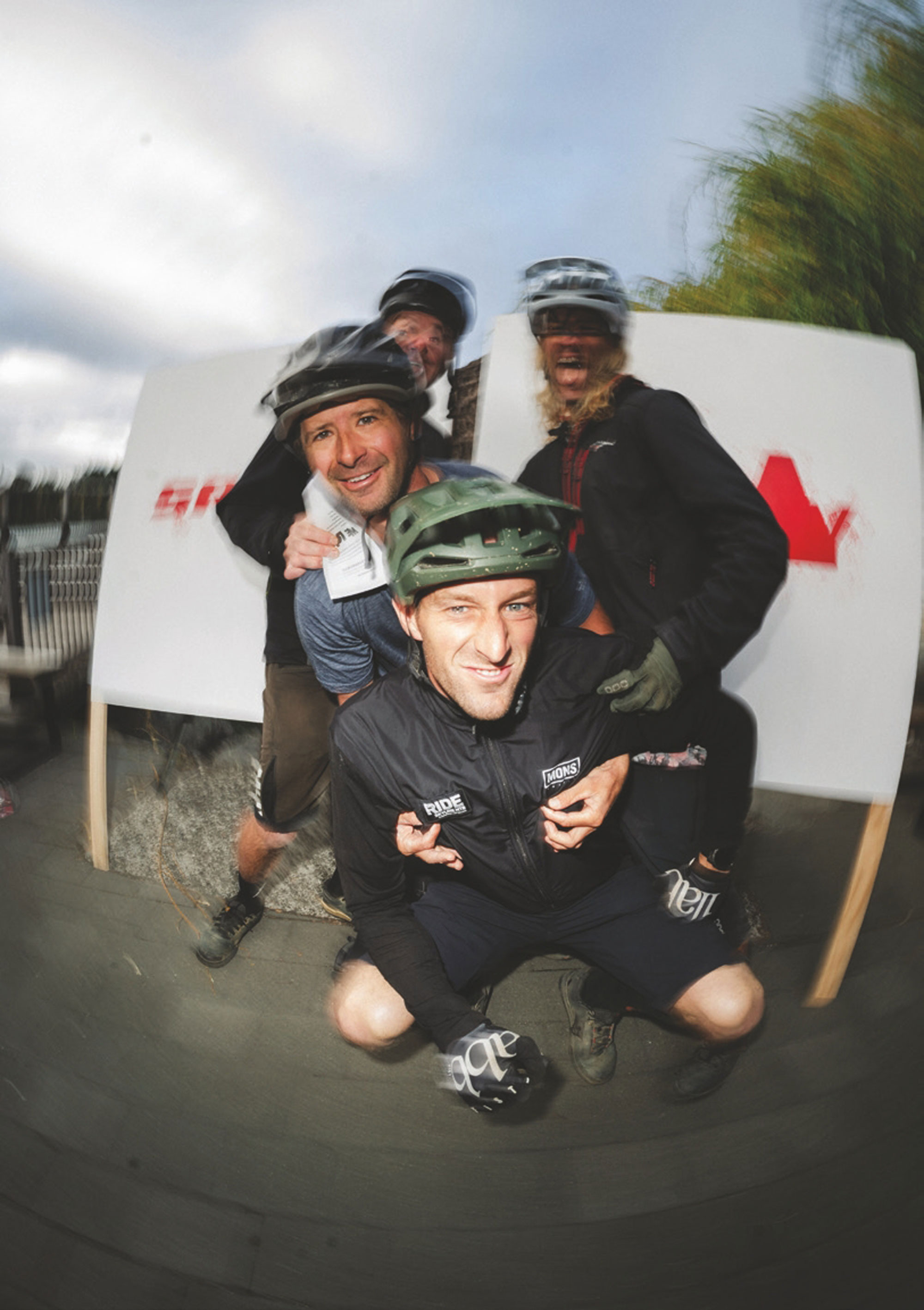
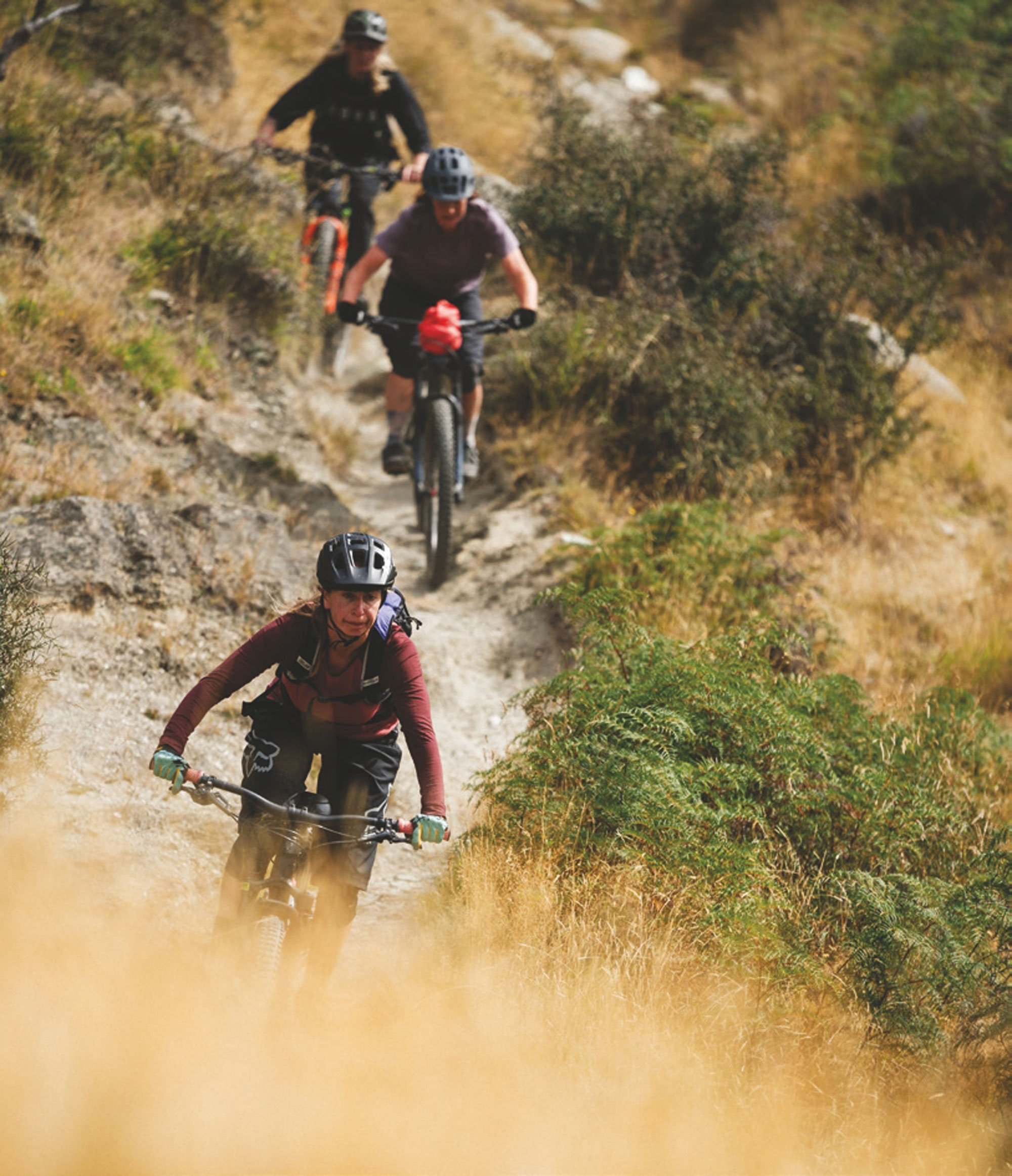
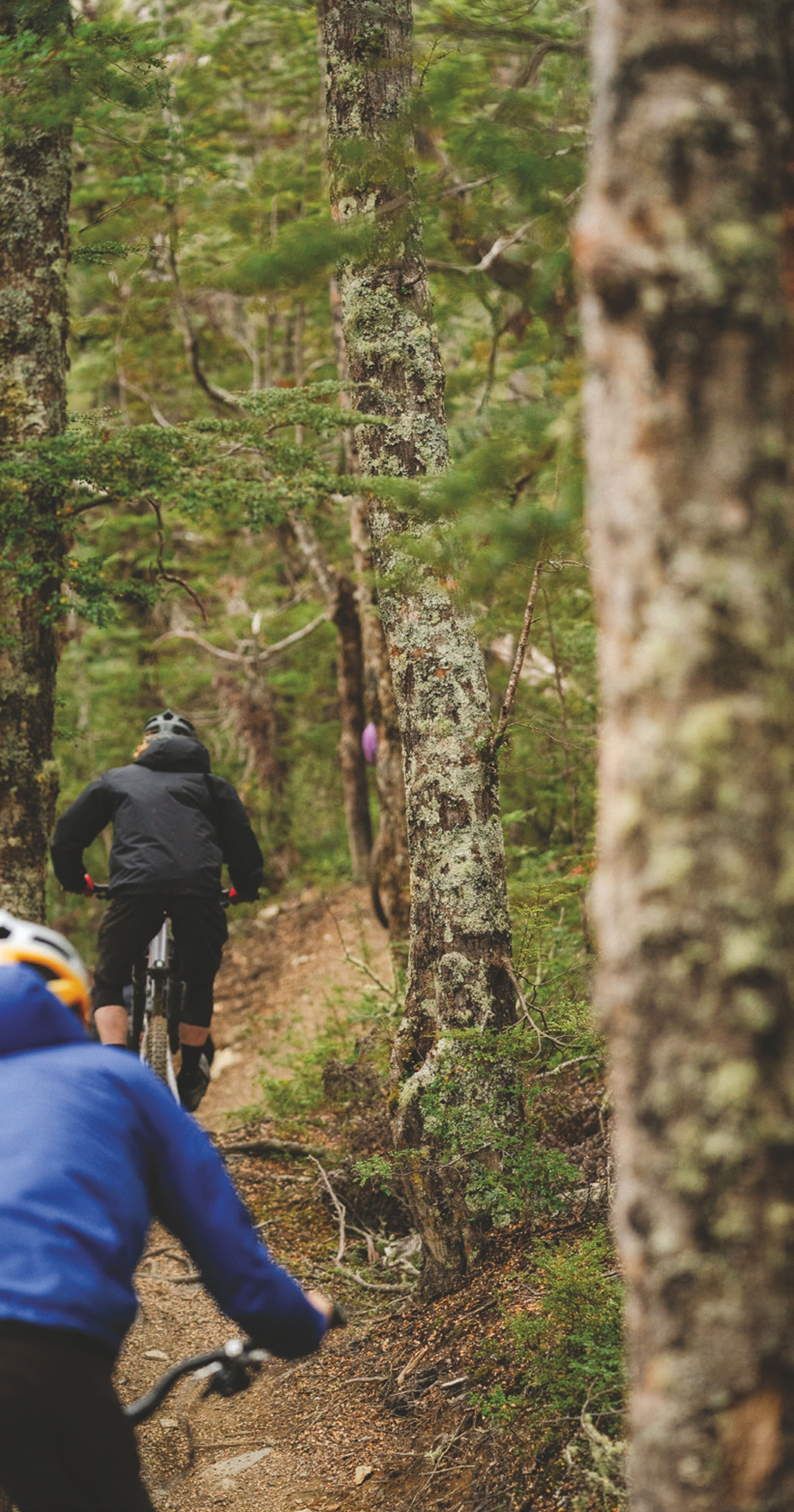


Your time is now
A poem by Noell Coutts
Images by Callum Wood
Seek the rugged wilderness, the mountains and the sky
Feel it, breath it, watch a
Falcon Fly.
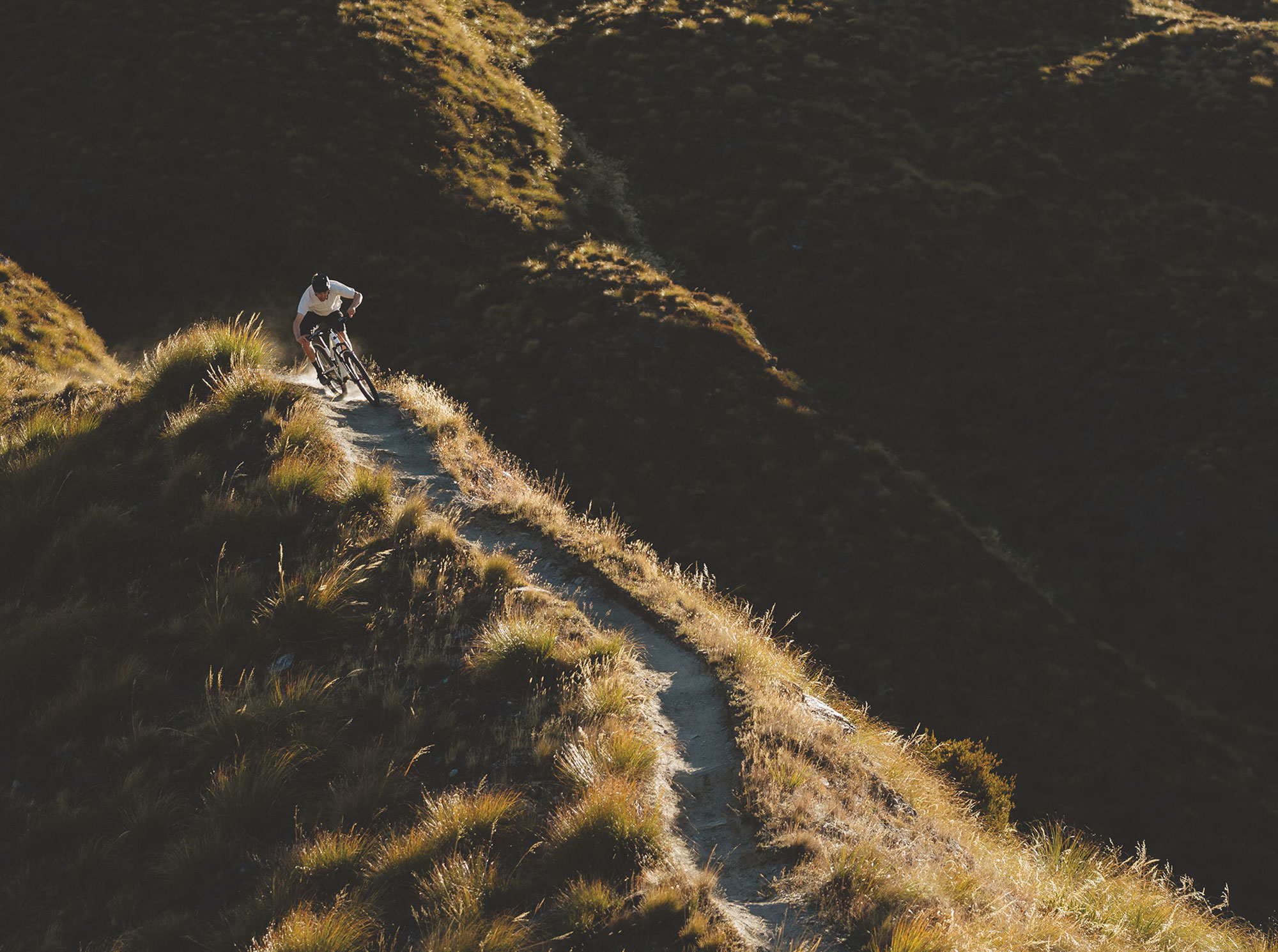
Hear the creek beds in the rivers, where miners searched for gold
Abandoned huts and buts of stuff, hear the
stories told.
The lust for gold,
the search, the thrill, the ghosts of days gone by The adrenaline, the buzz of it all, try and you’ll know why

Sometimes you go up, we all go down, sometimes the whole world’s
just spinning around

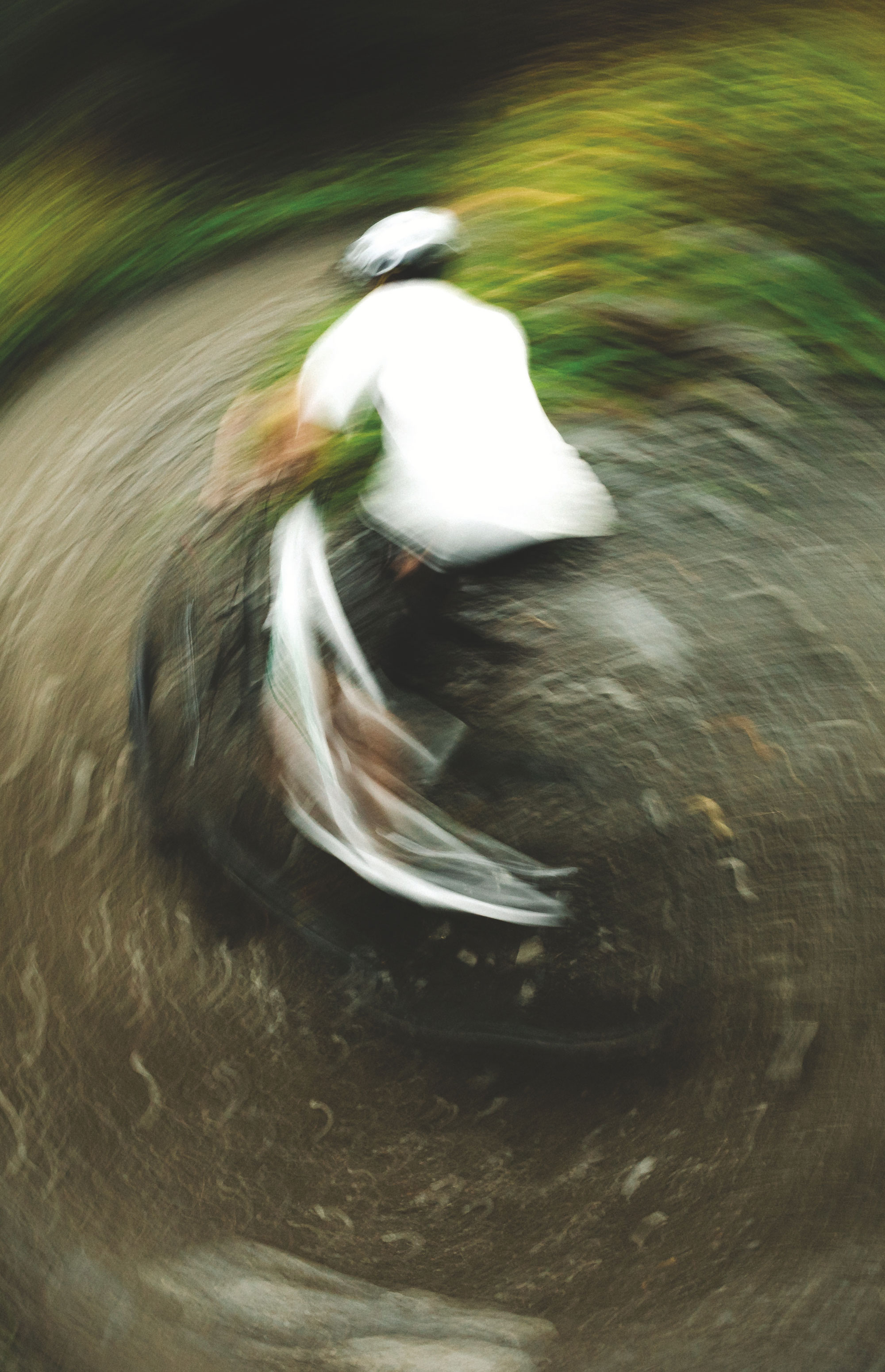
The
excitement
The
rush
The
thrill of it all
The
bumps and the bruises, the jumps and the falls

Time is the treasure, each hour of the day, but remember the clock only can go one way. Your time. Is now.

Coronet Loop Trail – Backcountry Escapism
Words Liam Friary
Images Jake Hood
“Queenstown already has enough trails!” – said no one, ever.
Enter the Coronet Loop Trail – a very welcome addition to the plethora of fantastic trails in and around Queenstown. The iconic southern town provides a home for many forms of riding culture; from gravity and jump to XC, tracks and cycleways, there is something available for everyone to enjoy, from the local shredder to the repeat visitor who heads there every chance they get. And, if you still haven’t experienced the riding in Queenstown, what are you waiting for?! Just be warned: this is the sort of place that will have you returning again and again, as you find more and more trails to ride with every visit.
As for the new Coronet Loop Trail – the Queenstown Trails Trust, in collaboration with Soho Properties, the QEII National Trust and Mahu Whenua – opened it in March 2022, after five years of hard graft and planning. The remoteness of this particular trail only emphasises just what a remarkable feat this collaboration – and the trail building itself – really is. The Queenstown Trails Trust is a charitable trust responsible not only for the planning and development of the Coronet Loop Trail, but more than 200km of trails in the Whakatipu Basin as well.
As far as backcountry mountain biking trails go – the Coronet Loop Trail has it all. The singletrack winds its way into the wild, through lush bush and across river gorges, deep in Queenstown’s remote backcountry. All of this, plus the rich history of mining in the area, ensures a non-stop sense of wonder as you make your way around the loop. The 50km trail has been well-crafted by technical trail builders and teams of volunteers, navigating its way around the mountains with gorgeous vistas that are forever changing. In terms of fitness, a moderate level is recommended due to the 1700m elevation gain across the entire loop.
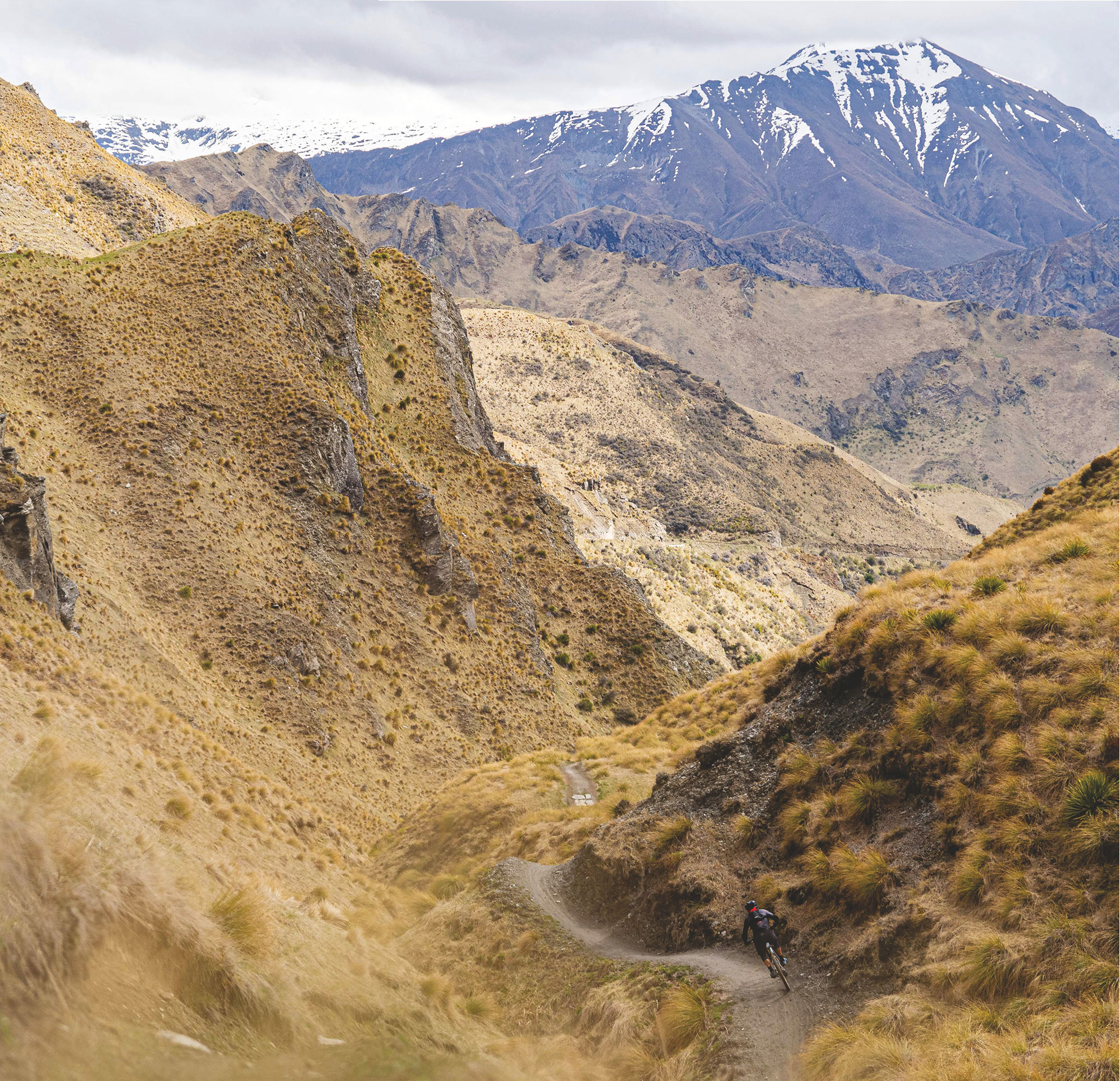
The remoteness of this particular trail only emphasises just what a remarkable feat this collaboration – and the trail building itself – really is.
The History
The area was once a hot spot for gold miners, who arrived in the 1860s, seeking their fortune in the Shotover and Arrow Rivers. It was a bleak existence for those who had travelled from far and wide in an attempt to strike it rich, and although 340kg of gold was mined from the Arrow River in 1863, many were unsuccessful in their attempts to find their fortune. The remoteness of the area required some hairy travel techniques just to get to it, making it hard to believe it’s now possible to complete this loop in a single day of enjoyment aboard a modern bicycle.
The Ride
As mentioned, the Coronet Loop Trail is a 50km track, which is graded as an intermediate Grade 3, and takes roughly 4 – 8 hours to complete. It’s considered a more challenging experience than the rest of the Queenstown Trail Great Ride, so it’s worth bearing that in mind before setting out for the day. All that is to say, if it’s a backcountry adventure you’re after, this is the trail for you.
The trail can be ridden in either direction and is a two-way track that is shared with downhill riders and walkers alike. It’s worth noting that there is a more technically challenging section of trail as it climbs up and over into Skippers Canyon, on the Tradesman’s and Pack Track and Sack trails – to bypass this, you’ll need to take the Skippers Pack Track or follow Skippers Road before joining the climb up to Greengate Saddle. Remember this is remote backcountry, so we recommend pre-trail fuelling in Arrowtown before you head out, like we did, carrying plenty of food and hydration, and celebrating your achievement when you return later in the day.

Golden mountains, fresh creek crossings and a couple of spectacular waterfalls.
The Experience
We took our own advice and grabbed a caffeinated brew and a scone before we tackled the loop from the trailhead in Arrowtown. Mark (Willy) Williams, CEO of Queenstown Trails Trust, legendary local rider and mountain bike racer, would be guiding us for this ride and, after our second round of brews, we were ready. I pedalled for a few minutes and, before I knew it, we were buried in the beautiful Bush Creek. The trail follows the creek through native beech forest and, thanks to another recent upgrade, now has several sturdy bridges fording the numerous river crossings. The trail climbs up a series of switchbacks onto the southern face of Coronet Peak. We stopped for a short break to eat a snack, drink water, and take in the splendid scenery before continuing to follow the Coronet Face Water Race. This precarious trail, hugging the side of the mountain, was previously used in the gold rush era to transport water to the Arthur’s Point sluicings, some remnants of the past remain as a reminder of the area’s rich history.
We got around the southern side of Coronet Peak, with Lake Whakatipu glimmering in the distance. I was in awe of the view but didn’t have the breath to say much as we summitted the highest point of Skippers Saddle (949m). I have ventured into Skippers Canyon by bike numerous times and was excited to be back again on the recently renovated Pack Sack and Track trail. The long view down the aptly named Long Gully sees the trail twist and turn out of sight. It’s here that you transition into more backcountry riding and leave the confines of society behind. The trail helps you easily navigate this transition as it twists tightly down the expansive, dusty valley. I descended into the trail, where the rowdiness of riding a gravel bike quickly became evident. I was nearly bucked from my bike at the beginning but managed to stay upright somehow. We transitioned back onto flowy singletrack, which took us down the mountainside, offering endless picturesque views.

As far as backcountry mountain biking trails go – the Coronet Loop Trail has it all.

Mentally, I transcended into a flow-state where the worries of the world evaporated as I focused on the physical task at hand: riding the bike. Being out in the wilderness really makes you switch off and helps you to restore; there’s something about being in a remote location that really allows you to shift gears from the blur of everyday life into something more purposeful and intentional. The jaw-dropping scenery helps with that, too. Soon, the situation had returned to climbing and a series of switchbacks up Greengates Saddle. The nuggety climb was worth it, however, as Greengates Hut was down a fun and flowing descent. This was our next snack stop – at the 25km mark, roughly halfway through the trip. Although the day had started out sunny and warm, as we reached the saddle, thick storm clouds gathered momentum and suddenly the lights turned out. Beautiful blonde mountain grasses turned to dark beige. The mountain tops were now completely buried in thick clouds and visibility was heavily reduced. Our rain jackets were quickly pulled around our shoulders as the heavens opened. An intense, but short, rainstorm bucketed down. The historic Greengates Hut provided us with shelter, just as it would have done for many years gone by. Legend has it that the nearby Greengates Hotel, at the confluence with Deep Creek, spent its final years being run as a piggery, serving bacon sandwiches to weary miners heading out to make their fortune. All that remains now, though, is an ageing schist hut with four bunk beds, a few worn pots and an old fireplace. The rain started to clear, so we ventured into the next part of the trail.
We headed upstream and over the precariously perched Picnic Rock before a bloody fun, long descent towards the valley floor. The remoteness was evident on this part of the trail; it’s an area that until now has been inaccessible – thankfully it’s been opened up for people to enjoy, as the scenes are unreal. Golden mountains, fresh creek crossings and a couple of spectacular waterfalls. The final climb for the day’s excursion awaited us. A dirt track was neatly etched into the landscape, eventually leading us to Eight Mile Hut. The storm clouds passed, and the sun’s afternoon rays defined the mountain’s shadows. It’s here that I felt fatigued but stoked to be out on such an incredible trail. More snack consumption made the last push easier. Before tackling the final section of trail, Willy and I shared tales about our lives to date. I was fascinated to learn how his endurance racing career saw him on podiums at epics such as Pioneer, Cape Epic, Trans Rockies and BC Bike Race – to name a few. Throughout his time at Queenstown Trails Trust, he’s helped develop an incredible network of trails in the Southern Lakes District, with more routes planned to open in the near future.
We continued on and, before long, we merged with the Macetown Road. This is a sandy, double- track, 4×4 road that’s got a ton of creek crossings through the Arrow River and plenty of potholes. You need to be diligent and, as the day takes its toll, that’s not always easy. The road is quite remarkable and it’s astounding that it was built back in 1884. I battled the sandy base – and my gritty drivetrain – down the road. For a more challenging finish to the day, an alternative miner’s track is available, marked with orange DOC triangles. It’s exposed, overgrown and not for the faint-hearted, but it’s there for anyone brave enough to seek it out – not us on this occasion! On reaching the Norman Spencer bridge and a few more signs of civilisation, the trail narrowed, with a few stairs to climb. We again rode through dense bush and past plenty of waterfalls leading us back to Arrowtown. The experience of the day mixed with tiredness and joyfulness, and my gratitude to those who have opened up this part of our country for us all to enjoy.

Abus Airdrop MIPS Helmet
Words Lester Perry
Image Cameron Mackenzie
RRP $579
Distributor Southern Approach
Full-face helmets underwent a revolution a few years ago, splitting camp. One took the full-gas, maximum protection, downhill helmet route, and the other headed down a more Enduro-focused, breezier, lighter-weight but marginally less protective road.
Although still popular with the Enduro crowd, lightweight full-face helmets are being snapped up by eMTBers all over the globe; the extra protection offering more peace of mind should a 20+kg bike smack you on the head during an accident.
The ABUS Airdrop MIPS hits my test scales at 804g, putting it towards the heavier end of the lightweight full-face category; however, as with most things, the scale alone doesn’t tell the entire story.
Internally, we find a traditional MIPs liner; it’s well-fitted to the shell and under regular use there is no noticeable movement between the EPS shell and MIPs liner. On the rear, we find a familiar dial adjust for a customised fit, although there’s no vertical adjustment to the harness, so it may not suit all head shapes perfectly. The internal padding is soft on the skin, and cheek pads snap into place simply and are easy to remove should you want to during a long, hot liaison – or for cleaning. The inside of the chin bar is lined with closed cell foam to help soften the blow should you take a big front on impact. This padding wraps up the shell slightly in a section in line with the wearer’s collarbones; the theory is to blunt the helmet’s impact on your collarbone should they make contact during a big crash. I haven’t put this feature to the test, but it does seem like it would work. The closure is a secure, tried and true, classic double-d-ring style; a somewhat fiddly but proven system.
A fashionably large and adequately adjustable visor is bolted in place but designed to “break away” in the event of a crash, drastically reducing its leverage on a wearer’s neck. The visor itself seems sturdy and has stood up to a bit of abuse; less could be said about many, more brittle visors out there.
Having reviewed other ABUS helmets previously, I went for the same S/M size, with a 52-58cm size range. The Airdrop is certainly a snugger fit, though, and I had the adjuster wound the entire way out. Even then, I found the shell was only just large enough for my head. Without trying it, the larger L/XL size shell would have been quite a step up, and I like the comparatively slim silhouette of the S/M size. Provided my head doesn’t grow then this size is comfy enough.
I was surprised by how much airflow the helmet offered, particularly considering the traditional MIPS liner usually disrupts airflow. The combination of large frontal air intakes, the strategically placed internal channelling, and the large rear exhaust ports worked exceptionally well.

I was surprised by how much airflow the helmet offered, particularly considering the traditional MIPS liner usually disrupts airflow. The combination of large frontal air intakes, the strategically placed internal channelling, and the large rear exhaust ports worked exceptionally well. I could feel the air passing over my head, even on muggy late spring days; I found it more breathable than some helmets I’ve worn with more vents. Vents just above the ears are a nice touch, offering virtually uninterrupted sound, so you can easily hear your mates yelling at you to “get off the brakes!” Or maybe that’s just me?
I’ve yet to come across a full-face that doesn’t work well with goggles, and the Airdrop is no different. However, depending on how large your goggle frame is, there may be limited space from the top of the frame to the forehead of the helmet, so it’s worth checking whether your specific setup would work. Not all full-faces play nicely with glasses; however, should you want to go down that route, the two work just fine together on the Airdrop.
The Airdrop meets all the necessary safety standards here in NZ, but I wonder how much it exceeds them by? It’s something we’ll never know. Still, with fewer vents than some popular models and more ‘meat’ (and consequently weight) across key areas, my bro-science would tell me that this helmet may lean further toward a downhill helmet than some brethren. I won’t delve too deep into the subject, but there is a sticker inside the lid touting that ‘the chin bar meets ASTM F1952 Standard Certification’; essentially a certification for downhill helmets that are tested to a higher level than the usual standards we see.
The fact ABUS claims the chin bar passes this certification leaves some grey area as to whether or not the entire helmet meets the standard. This standard is tested across an entire helmet, not just a single area, like the chin bar. The bottom line is, the helmet is more than sufficient for its use case, and there’s some added comfort in the fact it also meets at least some of the ASTM F1952 standard.
I’ve been impressed with the ABUS Airdrop. It’s light enough, plenty breezy, has some nice features, and looks unique amongst all the popular models seen out on the trails. I’ve even had several questions and comments about how good it looks!
The fit won’t suit everyone, so if you think you’d be on the crossover between sizes, be sure to try both to ensure the best fit.

Deathgrip Down Under
Words & Images Cameron MacKenzie
A look behind the curtain at one of this year’s biggest feature films, filmed in our very own backyard.

Clay Porter and Brendan Fairclough are two names synonymous with mountain biking – both having been influencing the way the sport is seen for close to 20 years each. Whether it Clay’s signature film making, or Brendan’s ability to blown up turns, with the internet it was inevitable they’d one day collaborate on something big and stamp their mark in the history books. Well, they did, all the way back in 2017, with the release of Deathgrip.



Since then, though, everyone’s been asking if there would be a second film – and finally, here we are. Deathgrip 2 is in the bag, and beginning to premiere all round the world, so it’s time to pull the curtain back on their first New Zealand segment.

The whole basis of Deathgrip is Brendan riding with like-minded riders, some of the best in the world in their respective areas, ripping the side- knobs off of some of the best trails and features you’ve seen. It was a no brainer that Bren would look to his long-time friend, Dave McMillan, and his hometown of Queenstown, to shoot a segment for DG2.
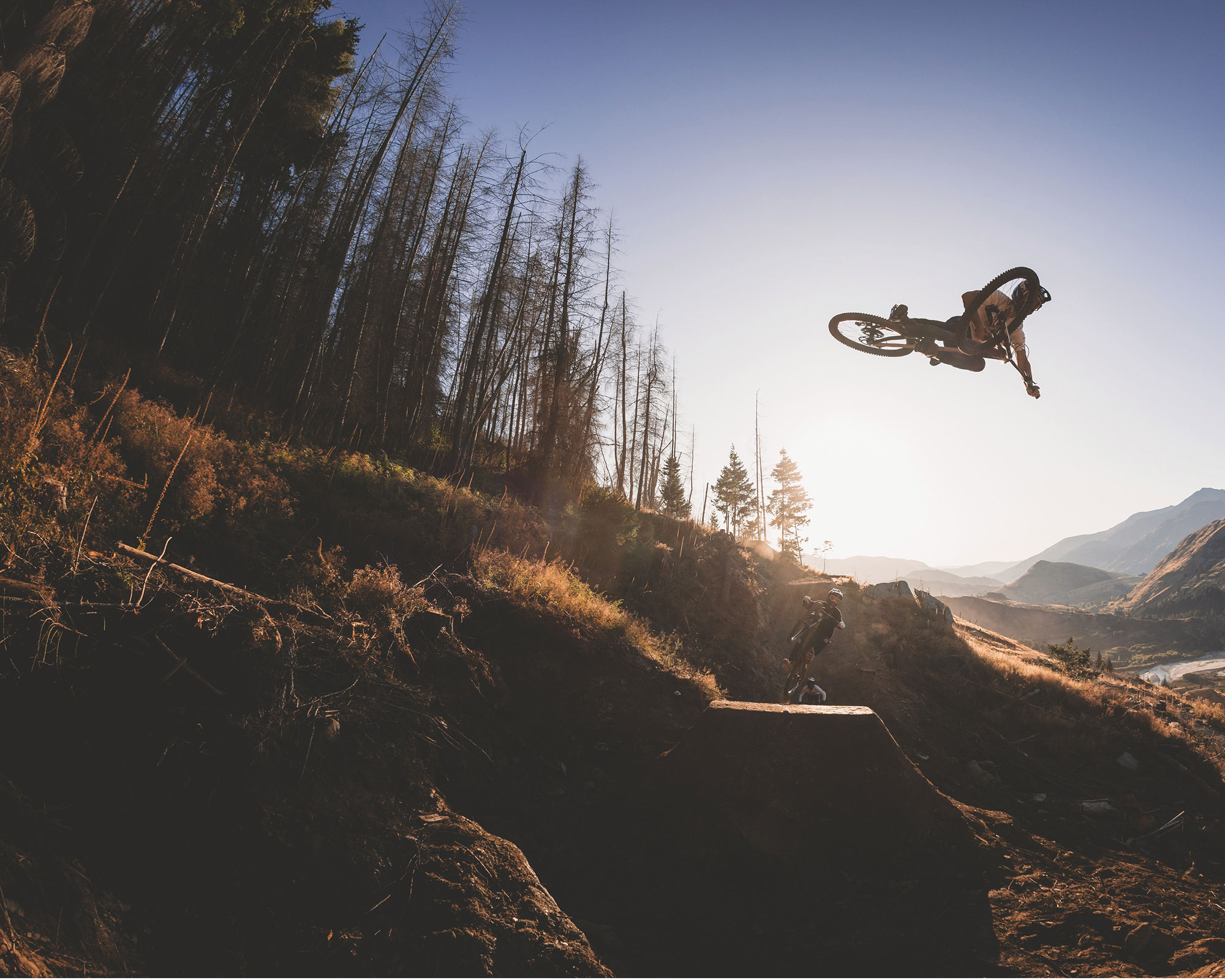

Dave, an owner of Flux Trail, was poised particularly well to pull off something epic for the film, with Flux Trail having their own private compound tucked away in an undisclosed location, and the resources to build anything they please.
What Dave managed to create was only fit for an all time crew – Olly Wilkins, Brendan Fairclough (also riding), with Clay Porter, Rupert Walker and Chris Seager on the dad-cams.

Over the course of four days, the team set to work “stacking clips”, filming every feature from every which angle – blending a lot of modern day techniques and angles together to create an experience for the viewer that will truly wow and inspire. Sun up to sundown is often the order for projects like this, and Queenstown really turned it on.
Stay tuned for more information on a New Zealand premiere, and where to buy a copy of the film.




Weldtite Chain Lubes
Words & Image Lester Perry
RRP $19
Distributor Southern Approach
Weldtite has a storied history. Starting out in London in the early 1940s, it initially manufactured and supplied puncture repair kits to British and Canadian paratroopers who, once on the ground, were getting about on folding bikes.
Eventually outgrowing its facility, Weldtite shifted to Barton, by the River Humber in North Lincolnshire, where it continues to develop and manufacture a wide range of bike maintenance products, to this day.
A lot has changed in the world of chain lubricants over recent years. New formulations, wet, dry, light, drip or melt; there’s now a lube for whatever style of bike you ride and whatever conditions you ride it in, not to mention options for both human and electric assist bikes as well. Whatever the style of lube or the name on the label, they’re all attempting to achieve the same goals: quieten the drive train, increase its efficiency, maximise its lifespan, and not attract contaminants.
I’ve spent a few months comparing the merits of two similar – but distinctly different – Weldtite chain lubes. Using multiple bikes and varied trail conditions, I’ve garnered a good understanding of each lube’s drawbacks and benefits.
Weldtite Ceramic Lube
This is an all-weather lube with ceramic additives for optimal efficiency, helping to conserve precious watts and decrease drivetrain wear. Its low viscosity allows it to penetrate right into the links of the chain, and its various additives bond to the chain’s surfaces, creating a hydrophobic barrier to resist water and contamination.
It’s reasonably light and has a runny consistency, so care was needed while applying it. I found it easy to overdo it, leaving the entire drive train susceptible to build-up of dirt and other contaminants. It literally only takes a small drop on each chain link to do its job. Once I figured the sweet spot between ‘too much’ and ‘not enough’, this lube was great. As with other lubes, one key to gunk-free riding is to begin with a completely clean system (chainrings, chain, jockey wheels), then apply the lube, leave it to sit a few hours, and finish by giving the chain a thorough wipe to remove any excess sitting on the outer surfaces.
In dry conditions, the drivetrain stayed clean, smooth, and quiet for many rides, with minimal gunk on the chainring or jockey wheels. I’ve been surprised at how well the lube has lasted; it could go multiple rides before needing to reapply. In wetter conditions, I found it didn’t last quite as long, although the bonus in the damp was how little grime the drivetrain collected, certainly less than many lubes I’ve used.
On a mountain bike, I’d reach for this lube over the summer, in dry to variable conditions. I’d run this lube year-round on a road or gravel bike.
I’d say it’s a jack of all trades, master of none.
Weldtite All-weather Lube with Teflon™
This lube is designed to excel when the trails or roads are wet, or rain is falling. It has a marginally thicker consistency than the Ceramic lube but is still quite runny. The All-weather is a bit stickier than the Ceramic Lube, closer to a more traditional ‘wet’ style lube. Weldtite tells us the lube is enhanced with a ‘Teflon Surface Protector’ to assist in repelling water and contaminants.
A light application is vital – it’s not as sticky as some all-weather lubes, but if there’s much on the outer surfaces of the chain (or overspill on chainring or jockey wheels), these areas attract contaminants. As with the ceramic lube, I began with a clean chain and applied a thin layer across the chin, leaving a few hours to wipe off any excess before riding. With such a small amount needed per use, the 100ml bottle should last even the most frequent of riders for a long time.
Amongst my normal cruising around, I rode this lube on one big (by my standards) overnight mission – some 19 hours of riding split in two by a particularly broken sleep in a roadside shelter…. but that’s a story for another time. Across multiple surfaces and trail types, from groomed gravel to stodgy mud, my drivetrain got a good workout and offered a real-world glimpse of what this lube is all about. There was no sign of the chain drying out, and at no point did the drivetrain seem like it needed more lube, staying quiet for the entire ride. By the time I rolled back into my garage at home, there was some buildup of contamination on the chainring and jockey wheels, although it was not a concern given the conditions and hours ridden. Had I taken the time to give the chain and jockey wheels a quick once over after my first day of riding, I could have saved some precious watts being absorbed by some of that buildup.
Given its chequered reputation, it would be remiss of me not to mention the use of Teflon (PTFE) in chain lube. A portion of the bike industry is removing PTFE and related compounds from their products, claiming no justifiable case exists for their continued use. A solid body of evidence shows that the PFAS used in the manufacture of PTFE, and the PTFE itself, are growing global health concerns. Both compounds are termed ‘forever chemicals’ and cannot completely break down in the environment. There’s a host of studies and evidence online if you’d like to know more about why this is a concern.
So, where does that leave me with the Weldtite All-weather chain lube? I’d say it’s a jack of all trades, master of none. This lube quiets the drivetrain, withstands terrible weather, and lasts well, but the drawback is that it picks up a bit more muck while doing its slippery job than some lubes targeted toward more specific conditions. This could be right up your alley if you’re keen on one lube to use across multiple bikes without matching lube type to conditions.

The Alternative Volunteer Collective
Words Lester Perry
Images Dominic Blissett
The underground trail builders shaping Christchurch trails.
The winter of 2022 was excessively wet, and the Christchurch Adventure Park (CAP) was frequently closed on weekends to preserve the trails. The closures gave CAP riders two options: get grumpy about the park being closed, or take advantage of closed (and consequently, empty) trails to improve them; making lemonade from lemons. Aaron Hogg had a crew of volunteers regularly digging on a Sunday morning, but only some of the people keen to be involved could make that timing work, leaving the door open for a second volunteer crew to get together.
Mark Stewart, Jeremy Burke, and Hamish Petty identified a part on the 3rd Base trail that they thought needed fixing, so they took it upon themselves to get it sorted. Despite not initially informing Aaron, Mark flicked some photos of the completed work through to him, and he was understandably stoked with their efforts and encouraged them to continue their mahi. This tight three-man crew formed the foundation for the Alternative Volly Collective (AVC), and they began to attract more volunteers to their dig sessions.
CAP remained unaware of their work throughout the rest of 2022. Mark, Jeremy and Hamish’s riding mates, as well as members from Aaron’s digging crew, began joining their efforts and spreading the word outside their immediate circle by using Instagram to showcase their maintenance work, attracting more members and expanding the crew to a current total of over 50!
By 2023, the group’s relationship with CAP became more formal, and they requested to be kept up-to-date with planned work so their patrol team could ensure adequate signage was in place – safety first and all that.
Securing funding from GC Super D (via Gravity Canterbury) and with assistance from the Ground Effect slush fund, the AVC has been able to fund additional tools for their projects. Their impactful work has extended beyond CAP, with several members contributing to dig days across the hills in Victoria Park, further north at Middle Hill, and on the hallowed grounds of the Craigieburn Forest Park trails.
If there’s a trail to build or maintenance to be done, the AVC is now big enough that it’s highly likely a mighty group can assemble and lend a hand. Many hands make light work, and enjoying the fruits of their labour is all the pat on the back they need.

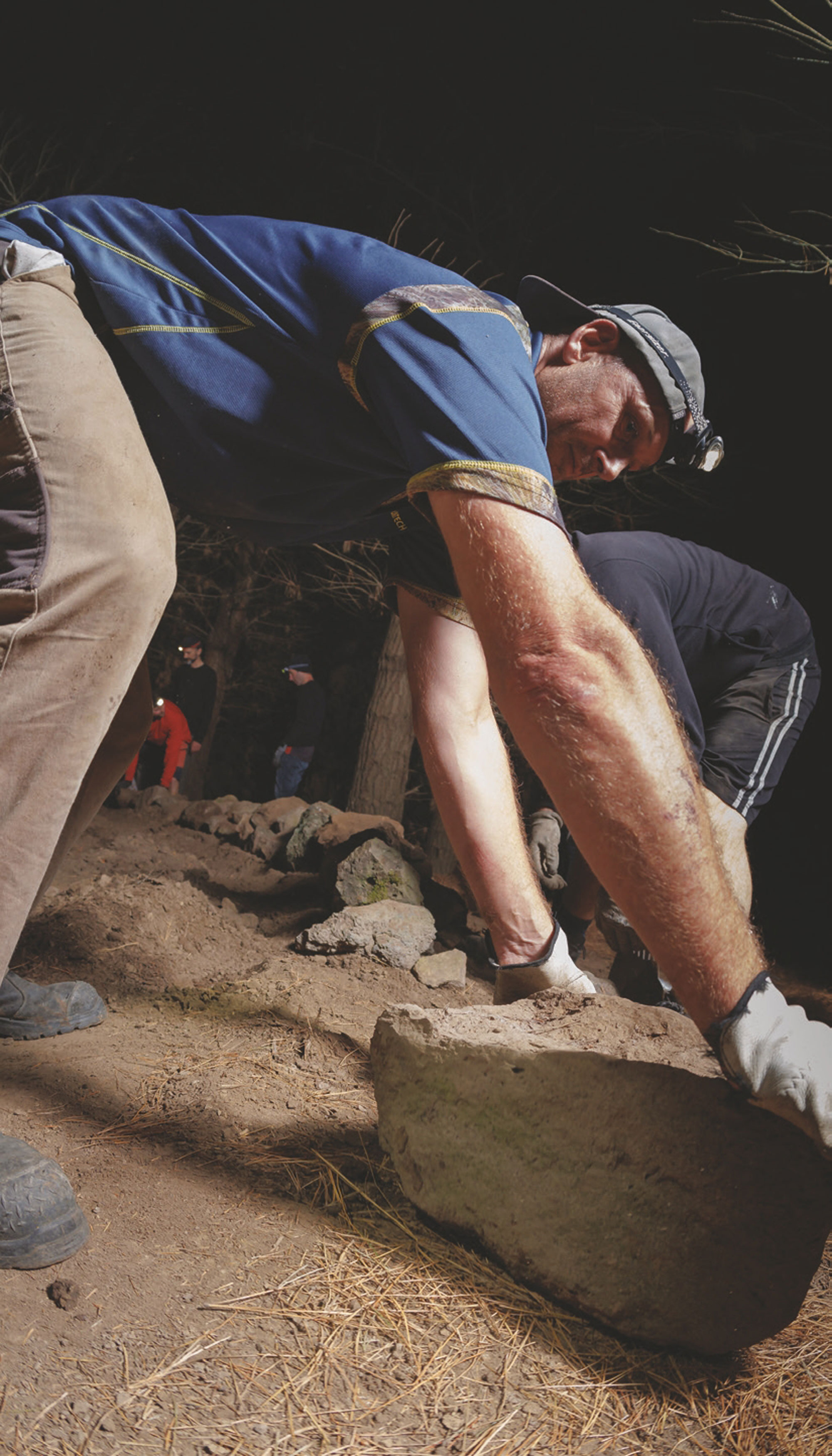

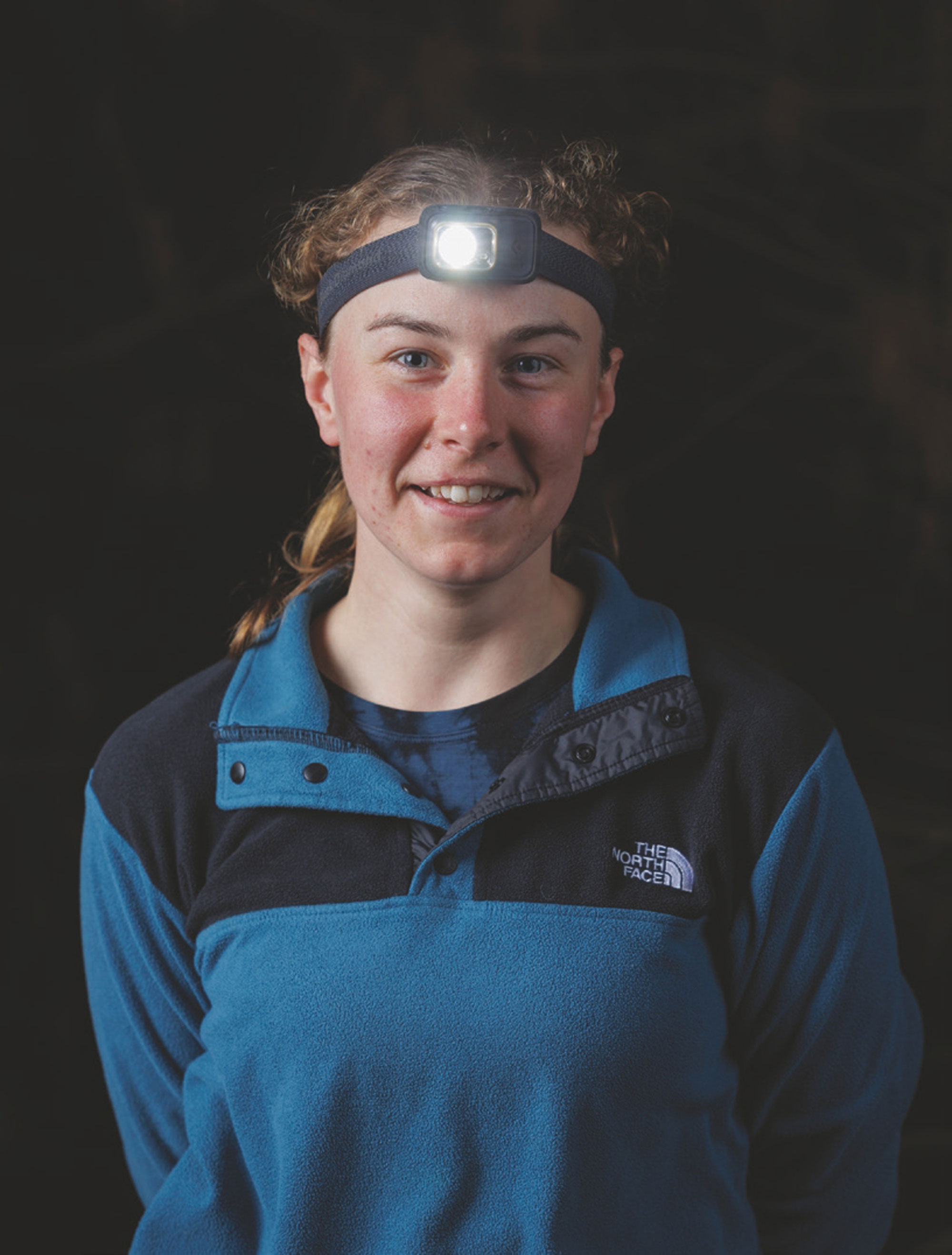

If there’s a trail to build or maintenance to be done, the AVC is now big enough that it’s highly likely a mighty group can assemble and lend a hand. Many hands make light work, and enjoying the fruits of their labour is all the pat on the back they need.
Key AVC Member profiles:
Name Steve Adams
Age 36
Rough number of dig days with the AVC? 25 digs
How did you end up as part of this trail-building crew?
I met Mark while out digging with Aaron Hogg on ‘Pork and Puha’, and asked to join his regular digging crew (AVC)
What’s your favourite trail that you’ve worked on? Addiction
What motivates you to keep going to dig days/sessions?
I work in an office all day so it’s good to be outside in the evenings and great to be improving trails that I like to ride.
What is the most rewarding part of being part of a crew like the AVC?
When you overhear people on the lift talking about how much better a repaired section of trail is, knowing you helped with it.
What do you think you’d most like the AVC to be known for?
Having a good time while improving the local trail network.
What’s a hot tip or technique you’ve learned that helps with trail building?
A reciprocating saw is great for removing root balls.
What would you say to people in other areas who are keen to get a trail-building crew going?
Talk to your local club or trail network owner and ask how you can help out. Start small and build up from there.
Anything you’d like to add?
Come and join the AVC, do a bit of digging and drink a few beers!
Name Sarah Mabin
Age 23
Rough number of dig days with the AVC?
Maybe 25?
How did you end up as part of this trail-building crew?
I saw some work that was done on a few corners on ‘Pork and Puha’ last winter and found out it was done by the AVC through a friend that helped with the digging. I was keen to be a part of it, since it made those corners so much nicer!
What’s your favourite trail that you’ve worked on?
Probably Wasabi 2.0 What’s your favourite trail in Christchurch? My all-time favourites are Gung Ho at CAP (specifically the top half) and Pedos into Wazzas at Vic Park
What motivates you to keep going to dig days/sessions?
You know that each dig helps to get rid of NREs (Negative Rider Experiences) and make CAP better for everyone!
What is the most rewarding part of being part of a crew like the AVC?
I’ve met so many people I wouldn’t have otherwise! Everyone is out here to help, and it creates a feel good vibe! And another perk is sampling unfinished trails!
What do you think you’d most like the AVC to be known for?
The people in the AVC are absolute legends and volunteer an incredible amount of time and effort into the CAP trails! Their work shouldn’t go unnoticed!
What’s a hot tip or technique you’ve learned that helps with trail building?
I’m not as physically strong as some of the guys but it’s all good because the weight of the tool does most of the work for you. And of course; to stay hydrated, it is the AVC way after all! Digging isn’t just for the guys! Would love to see more girls out in the Chch digging scene! I had no idea about trail building when I started but there’s always a friendly face willing to guide you if you’re unsure what to do.


We move a bit of dirt, listen to some tunes, bounce a bit of banter, smash a few tins and we get to ride our own work when we’re done.
Name Mark Stewart
Age 50!!!
Rough number of dig days with the AVC? >100
What’s your favourite trail that you’ve worked on?
The full rebuild of Kama Sutra. We had some challenges with rain events and having to rebuild sections twice, but it runs so good now. And the start of the Crankworx DH line that was never used due to the latest fire.
What motivates you to keep going to dig days/ sessions?
Removing NREs. Everyone complains about them, but few do anything about it. We have just been maintaining trails over the last couple of years but are about to start on a brand- new trail which will be an exciting challenge.
What is the most rewarding part of being part of a crew like the AVC?
Getting out and making a difference to the local trails and hearing the positive feedback from riders after we have fixed\improved part of a trail.
What do you think you’d most like the AVC to be known for?
Being a focal point for people to get involved in digging their local trails. I guess it could be hard to get involved if you don’t know who to contact or you don’t have any experience. Anyone can message us if they are keen; all are welcome.
What’s a hot tip or technique you’ve learned that helps with trail building?
Get lots of tools!! You can never have enough of them
What would you say to people in other areas who are keen to get a trail-building crew going?
Get in touch with whoever manages the land where you want to dig. Get on the socials, it is the best way to reach a wider audience than your normal riding circle. Over the winter months, if you can’t ride due to the weather you might as well dig! You never know, you might really enjoy it.
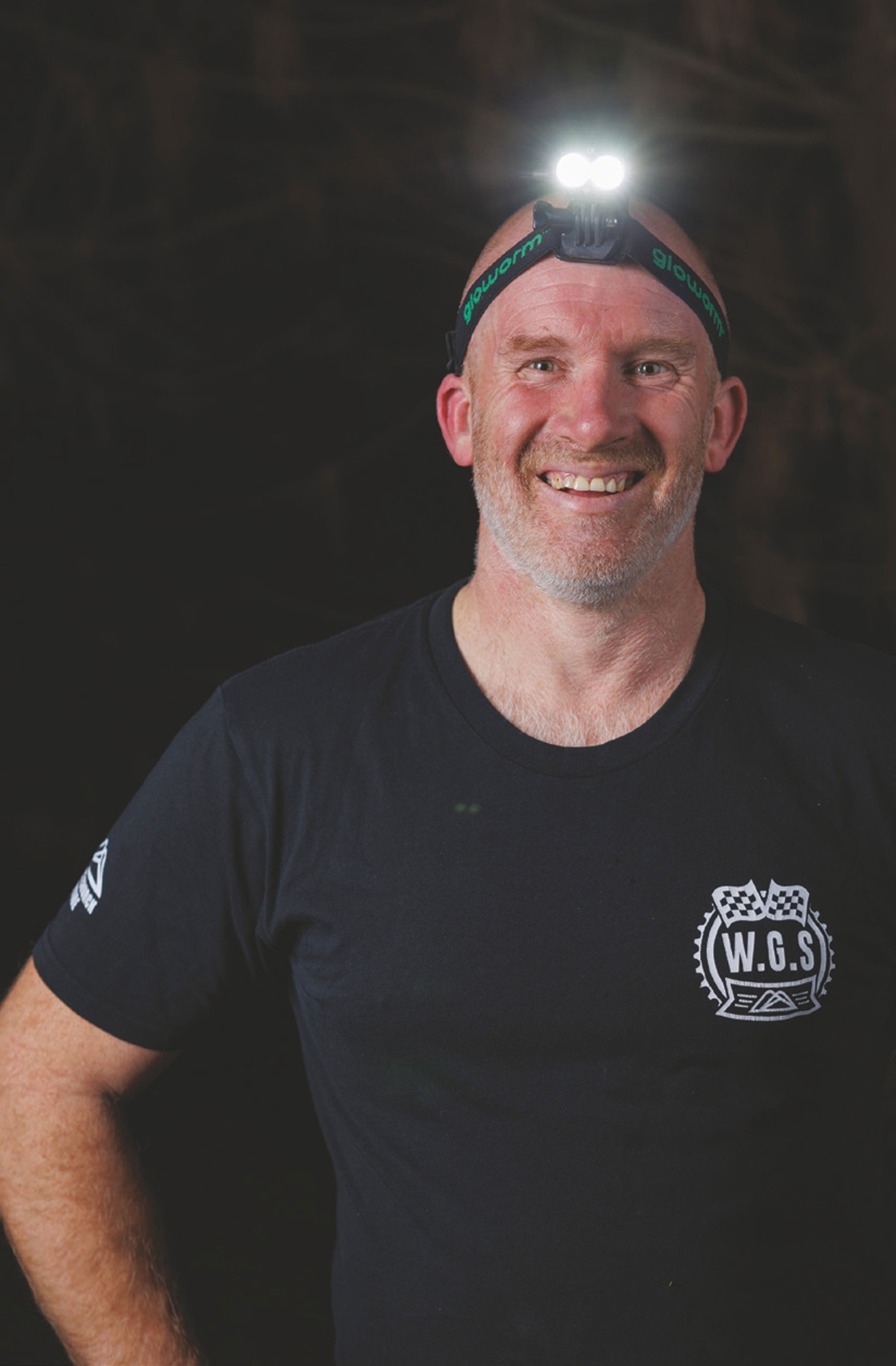

By 2023, the group’s relationship with CAP became more formal, and they requested to be kept up-to-date with planned work so their patrol team could ensure adequate signage was in place - safety first and all that.
Name Hamish Pretty
Age 45
Rough number of dig days with the AVC? 40+
How did you end up as part of this trail-building crew?
I’ve been with the AVC since the beginning, before it even had a name. My first dig was with Mark Stewart and Jeremy Burke for a repair session on Rake n Bake one Sunday after the chairlift closed early due to poor weather.
What’s your favourite trail that you’ve worked on?
Pork and Puha. It was always a favourite track, and a track the AVC really took ownership of in our first season. It started with some repair and grooming then, as we gained the respect for sensible building, we started adding new lines and extra features into the trail.
What’s your favourite trail in Christchurch?
Choccy Milk. It’s got a bit of tech, lots of doubles and it’s non-stop busy. You’re working for it, always lining up the next feature, never just riding along.
What motivates you to keep going to dig days/ sessions?
Digging has always been a part of the culture that goes with riding bikes. If you want mint trails, pick up a shovel and help out. We move a bit of dirt, listen to some tunes, bounce a bit of banter, smash a few tins and we get to ride our own work when we’re done. The experience is always fun and rewarding which is why the group is constantly growing, it keeps myself and others coming back for more.
What is the most rewarding part of being part of a crew like the AVC?
As part of the AVC, I’m rewarded with the satisfaction of riding the trails we have worked as a team, but the best part of being in the AVC would have to be all the great people I’ve met who I now know as friends. Come riding day, I dare say, the AVC is the biggest riding group on the hill and I’m proud to be a part of it.
What do you think you’d most like the AVC to be known for?
I’d like the AVC to be known as the dig crew that makes trails great again.
What’s a hot tip or technique you’ve learned that helps with trail building?
Hot tip: strap your hand tools together for easier transportation onto the hill. Wear leather gloves and keep your eyes covered if you’re smashing rocks.
What would you say to people in other areas who are keen to get a trail-building crew going?
Talk to whoever’s in charge of the land so your work is accepted and appreciated; invite people onboard, as you’ll need the help; keep it fun so people return for more; post on social media to spread the word.
More recently, the AVC established a new lower half of one of the favourites, ‘Wasabi’, which had been abandoned after a huge storm blew over many trees, making it impassable. With some direction and help from our mentor trail builders, Aaron Hogg and Richard Goldsbury, the AVC got stuck in and the new trail was forged. Since we made it to the valley floor and had an exit, three more abandoned trails – Captain Torpedo, Drainpipe and SMC – were reworked and have been brought back to a rideable state. All four trails are awaiting park sign off to be returned to service. The Dual Slalom has recently been cleared by the AVC after being overgrown with gorse for years, and we held an unofficial race on it early in May. Our focus has now moved to the creation of a new blue line on the open side of the hill. From a couple of riding buddies fixing blown out berms, to a 50+ strong crew building race tracks and new lines, the AVC has come a long way in a short time. The AVC wouldn’t exist if it wasn’t for Mark Stewart – he was there from the beginning, liaises with the park, attends most of the digs, records all the attendees, logs the dig tally for the reward scheme, posts the work onto social media tagging all the attendees, and he rides the tracks when they’re done. He is the boss!


As part of the AVC I’m rewarded with the satisfaction of riding the trails we have worked as a team, but the best part of being in the AVC would have to be all the great people I’ve met who I know now as friends.
Name Lucy Moore
Age 14
I have recently started helping at dig days and am really enjoying it. I ride lots and wanted to help out. I saw some posts on Instagram and heard about it and reached out. I have really enjoyed working on the dual slalom track and it was super cool to see people racing it on recently.
My favourite trails in Christchurch are Pork ‘n Puha and Addiction at CAP, and RAD and Pedal Fine in Vic Park. Trail building is super rewarding and I like to know I am helping contribute to having cool trails to ride.
For me, the most rewarding part of being in a trail crew like AVC is being able to develop a track and step back at the end of a dig and see how much you have done. I am still learning the ropes but am super keen to head out for a night’s building.
Name Nick Sutcliffe
Age closing in on 49
How did you end up as part of this trail-building crew?
I’ve been running a winter dig session in CAP for several years. People come and go but we have a pretty small, solid crew who always turn up. Working with the AVC crew means we have more people digging and can basically get more done. We wouldn’t have finished our trail last winter without AVC.
What’s your favourite trail that you’ve worked on?
We worked on Rere Pia with AVC last year – worked out pretty well.
What’s your favourite trail in Christchurch?
Quite enjoying a mix of Karma/Shred/ O-zone at the moment. Otherwise, one of the old school DH tracks.
What motivates you to keep going to dig days/sessions?
Just enjoying creating trails.
What is the most rewarding part of being part of a crew like the AVC?
Everyone’s so passionate!
What do you think you’d most like the AVC to be known for?
Supporting CAP as it continues to grow.
Check out the @Alternative_Vollie Collective on Instagram for details of what they’re up to and dig session details.

SRAM Maven ULT Brakes
Words Lester Perry
Images Lester Perry & Callum Wood
RRP $622 per end
Distributor Worralls
It’s been a while since I came across a new bike component that, once bolted on, offered a noticeable performance improvement from its predecessor. Often new releases are more of “a tweak here, a tweak there, and a splash of paint” rather than a complete redo, ending up with something vastly better than what was offered before.
In the space of just 12 months, SRAM has done just that – offering two groundbreaking new ranges, first with the launch of the Transmission ecosystem in March 2023, and now with the recent release of the Maven series of brakes.
The first and fundamental change that SRAM made at the outset of its quest for top performance was to design the system using mineral oil rather than its traditional DOT fluid. DOT fluid absorbs moisture over time, and its use means more regular brake bleeds as the oil’s properties eventually change as moisture is taken on. After a couple of years, the seals, particularly in the lever, needed replacement as they are ultimately eroded or swollen by the DOT fluid, rendering the brakes useless. Unfortunately, the cost to replace the seals is about equal to just replacing the entire lever (unless you do the job yourself), so guess where all these old brakes end up? Mineral fluid isn’t corrosive and doesn’t absorb moisture like the DOT so, theoretically, less maintenance is required, and the brakes will last a lot longer.
The combination of the new seal material and the mineral oil offers better performance across the heat spectrum in which the brakes operate. From the depths of a Queenstown autumnal inversion layer – where brakes may never heat up a lot – to lengthy laps on Whistler steeps, the idea is to offer a brake that performs more consistently across a wider variety of running temperatures and with less maintenance. The new seals and use of mineral fluid, combined with larger pistons and a new, gargantuan calliper, seem to have achieved this – from my experience so far.
For a brake to be powerful and consistent, it needs to keep enough heat in the system without overheating or excess cooling; not be too hot, not too cold, just right – like a good bowl of porridge. The greater thermal mass in the Maven calliper takes longer to heat up but, by design, balances the peaks and troughs of temperature, maintaining a more consistent and optimal temperature, ultimately providing a more consistent braking performance regardless of how hard you are on the brakes.

There’s a nice, solid, woody feel, and you can tell when the pads contact the rotor. There’s a familiar feeling of modulation, just like other high-end SRAM offerings.
We installed a set of Maven ULT on my daily driver, a Trek Slash, and over the past few months I’ve been figuring out what they’re all about. I’ve been running the stock organic pads and 200mm HT2 rotors. In the past, with SRAM brakes, the stock organic pads would be first to go, instantly upgrading to a sintered option. In this case, I’ve had no complaints with the Maven’s stock organic pad compound. Apparently, like previous SRAM offerings, the sintered pads come into their own in wet conditions, but so far I haven’t seen the need to put the sintered pads to the test on these brakes.
There’s a limited edition Maven Expert ‘red splash anodised’ colourway that Liam (editor) has been running but, honestly, that red would have clashed brutally with my orange bike, so the polished silver and black version ULT suits my setup perfectly – and we all know looks are part of the performance package, right?
The lever feel is not too dissimilar to the latest SRAM Codes. There’s a nice, solid, woody feel, and you can tell when the pads contact the rotor. There’s a familiar feeling of modulation, just like other high-end SRAM offerings. With some heat in the system at speed, the lever remains comfortably consistent and doesn’t wander or pump up. Wet weather is no bother either. The combo of the 200mm rotor and the huge pad contact area provides awesome wet-weather power.
It’s nice to see a slight tweak in how the brake hose exits the lever body; compared to the Code’s ‘Stealth’ levers, the hose comes out of the lever and angles away from the handlebar rather than towards it like other Stealth style brakes. Having ridden bikes with the standard, angled ‘Stealth’ levers and their regular ‘slap’ noise as the brake hose smacked on the bars, I was glad to see this minor tweak. I’ll be interested to see if this change rolls into the rest of the ‘Stealth’ levers over time.
The Maven ULT edition features lever reach and pad contact adjustment. Although the lever looks quite similar to the Code Stealth lever, inside the lever body we find the necessary differences, including piston size, to optimise for the Maven calliper’s oversized pistons.
My favoured setup is to have the pad contact wound completely in (so the pads contact quickly) and the lever wound far enough in that it ends up near parallel to the handlebar, allowing for minimal reach and only a small lever throw before pads engage. The lever pull feels slightly firmer than a SRAM Code and considerably firmer than a Shimano brake. It’s a matter of getting used to it rather than better or worse in my book, and I’ve been running Shimano 4-pot brakes up until this set arrived.
The Maven is touted as providing almost 50% more stopping power and requiring about 30% less force on the lever to deliver the same power as the Code Ultimate brakes – some heady stats that, before riding them, I found a bit hard to swallow. After a couple of months aboard the brakes, however, I can’t argue with these numbers; there is a serious amount of stopping power on tap and my forearms aren’t complaining.
In seasons gone by, it’s been common to see downhill and enduro racers’ bikes fitted with the largest rotor size they could squeeze into their frames. Part of the impetus behind making the Maven’s so powerful was the aim to be able to scale down the power by running smaller rotors. Smaller rotors are less susceptible to rock or debris strikes, so staying straighter and having so much power on offer gives a rider the ability to tune their power to their needs depending where or how they’re riding.
With no worry of underpowered or overcooked brakes, there’s no reason not to brake later towards turns or go deeper into a chute before braking.
Weight-wise, there’s an additional 60 grams per end on the ULT above a comparable level Code brake (calliper, hose, lever); my trusty calculator tells me that’s a 20% increase. It is considerable, especially when most of the extra weight is in the calliper. In fairness, depending on what size rotors are fitted, and whether or not they require adaptors, you could end up with a similar (or even lighter) total system weight compared to a Code with larger rotors. But, with more power and more consistent performance.
As you see, there’s a load of tech to unpack with an entirely new offering like the Mavens, but if what you really care about is how these units work in the real world, then read on.
There’s no doubt these brakes are the gruntiest I’ve used. I’ve ridden several powerful gravity- oriented brakes, but by no means a majority of what is available. The Mavens have surprised me, not just with their raw power but with how consistent the feel is; every time I’ve pulled the lever, the feel is the same and, even on longer runs where other brakes have suffered with heat issues or cooked rotors, I’ve learned to rely on the consistency of the Maven.
With immense power comes immense responsibility. Traction is more critical during heavy braking, and part of this is maintaining body position – something that takes some adjustment. With no worry of underpowered or overcooked brakes, there’s no reason not to brake later towards turns or go deeper into a chute before braking. Braking in a shorter distance means higher forces on the body and tyres over a shorter time span than lesser brakes – think a Stab rather than a Slice – and certainly something that takes some time to become familiar with.
Anchors on = slow down. Full stop. No story, straight to bed.
It’s taken some time to adapt my riding and change my ingrained habits to make the most of the Mavens, but it does feel like if I were against the clock, I’d see some time savings, particularly on high-speed and steep tracks.
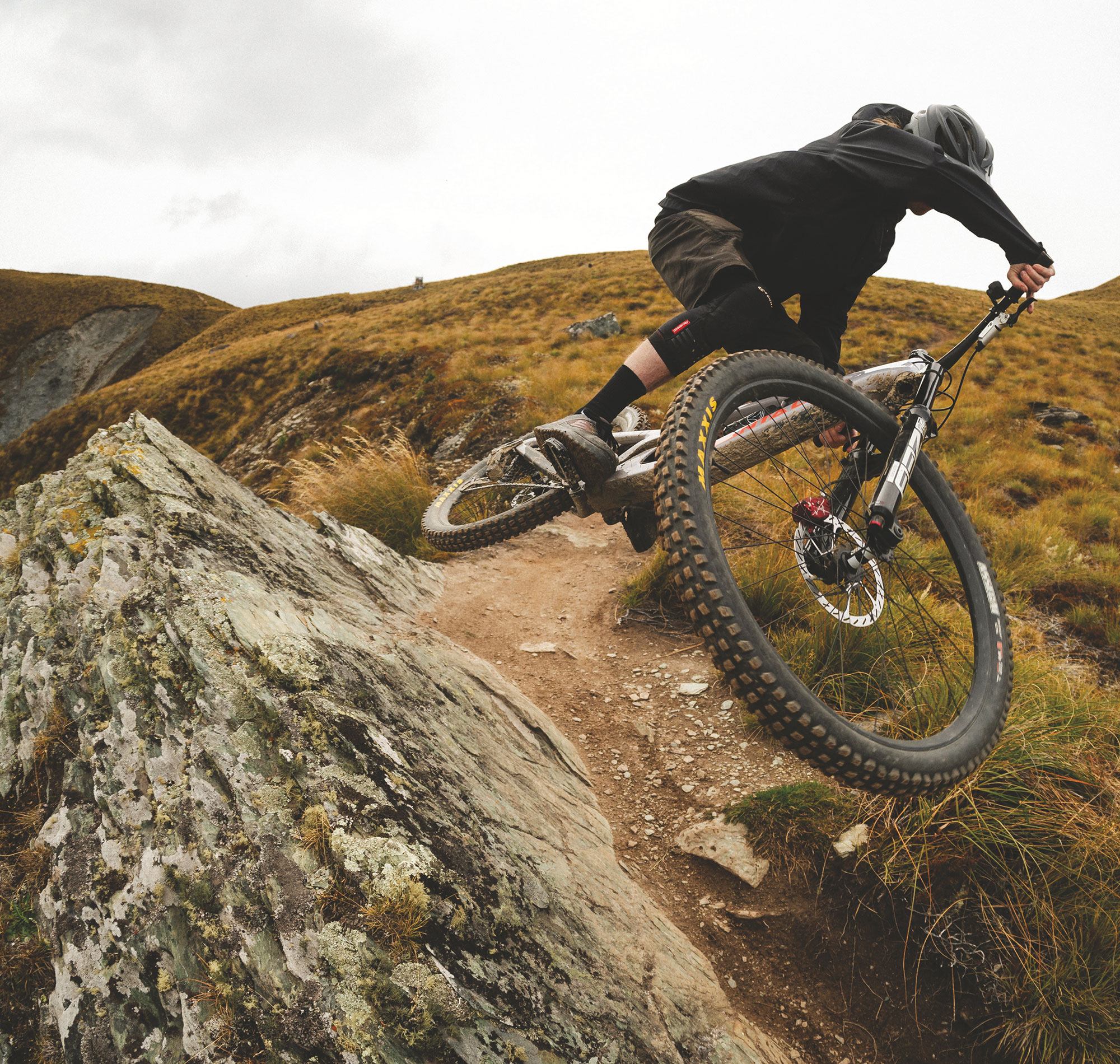
With some heat in the system at speed, the lever remains comfortably consistent and doesn’t wander or pump up. Wet weather is no bother either.
On most eBikes I’ve ridden recently, the brakes have underwhelmed me. An adequate brake has often been let down by an inadequate rotor, and it’s been quickly cooked, rendering it nearly useless. Generally the brakes just aren’t consistently grunty enough for the weight they need to slow down. A note to product managers: a 180mm rotor doesn’t belong on an eBike! The additional heft of a complete eBike system (rider, gear, bike) makes a set of Mavens for eBike use a total no-brainer and a worthy upgrade.
As good as the Mavens are, they’re not for every bike, and for sure, they’re too powerful for some scenarios. In slick conditions, I think I’d like to try smaller rotors to detune their bite somewhat. Such powerful brakes make it a bit harder to keep the wheels rotating under braking when trails are super wet, and lockups come easy when there’s this much power at such little effort. Likewise, unless the brakes are fitted to a downhill bike, or you’re riding long, steep trails on an Enduro bike, then you’ll likely want to de-tune them to the point where their performance (outside of the mineral oil and heat advantages) would put them in line with a Code or similar brake. On anything less than a balls-to-the-wall Enduro or Downhill bike, where maximum power isn’t essential, I’d be reaching for a Code or something similar.
Spending time on these brakes has got me thinking; SRAM now offers eBike tuned suspension (under the Rock Shox brand), transmission drivetrain, Maven brakes, and even a collaboratively developed eMTB motor. Combine these bits with other brands in the SRAM family: such as ZIPP wheels, Truvativ cockpit, Time pedals, and a Hammerhead bike computer. These are all arguably top-shelf and market-leading (or close to it) items that all suit the eMTB market to a tee. There are only two pieces to the puzzle missing: a good set of tyres and a frame…. Hmmm what will the future hold?






